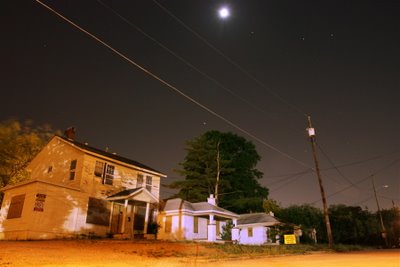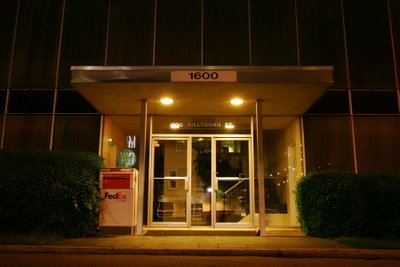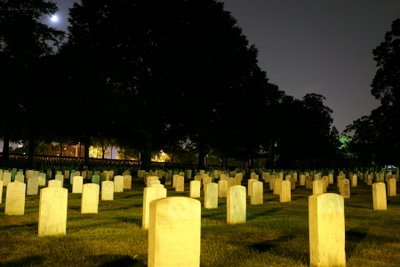The Abandoned Section Of Stanhope Avenue


There is a section behind the old bulldozer building on Stanhope Avenue that has been abandoned for a few years now. Ballentine Properties has been renting out the space for student parking in recent years. Stanhope is one of those parts of Raleigh that are somewhat hidden, as you usually only wind up there out of curiosity or by accident. It’s a series of older and mostly modest homes that have been there for some time.
When I stopped to get these pics, I talked to a resident of the road and got a good bit of the sentiment that prevails amongst some of the residents. For the interest of disclosure, I am employed by Lulu.com which will soon be moving into the NC Equipment Building (aka The Bulldozer Building) that makes up a good part of the landscape on Stanhope Ave. From what I understand, they (my employer) are anxious to see the Stanhope Plan come to fruition. Although the resident I spoke with didn’t outright state opposition to the Stanhope Plan, I got the impression that the residents of the street were not enthusiastic about it. I’m not sure if it is because of plans for student housing or parking, or the increased amount of traffic which it would bring to the road, or something else. In any event, I can certainly understand the apprehension of new development in one’s backyard. The extremely rural area where I grew up is transforming from apple orchards and logging trails in to housing developments and state parks. It’s not easy to see the environment you’ve come to know change in ways beyond your control.
The person I spoke with went to NC State, and has memories of people and friends that lived in the houses pictured above. She said that the last memories she has of people living there were those of a shady nature, being associated with drug dealing and other nefarious activities.
So the question remains, what is the best way forward? I can’t say I have the answer. Although I have a great passion for historic preservation, sometimes development comes and you are powerless to stop it.
It appears that the bone of contention isn’t that these old and decrepit houses are getting knocked down, but what will appear in their place–that which is more friendly to students, or something that is more friendly to long term residents.



 Sign up for the Newsletter
Sign up for the Newsletter